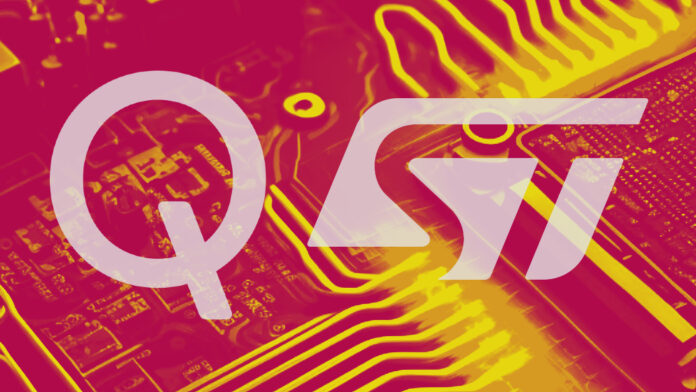Qualcomm Technologies is to integrate its Wi-Fi/Bluetooth/Thread combo system-on-a-chip (SoC), which features on-board compute processing for low-power AI workloads on industrial IoT applications, into STMicroelectronics’ STM32 family of microcontrollers (MCUs). The deal will expand to see other cellular IoT SoCs integrated, as well, and run alongside STMicroelectronics’ own Bluetooth Low Energy, Zigbee, Thread and sub-GHz portfolio
Initial joint offerings will be available to IoT manufacturers (OEMs) from the first quarter of next year (2025) – “with broader availability to follow”, they said. The pair want “quick and broad adoption” of the combined solutions via the latter’s sales and distributor channels. The focus – as with every IoT product release, and every IoT announcement – is to enable better-integrated module-level edge AI for a new range of IoT applications.
The arrangement covers sundry SoC software toolkits. It will see developers get “seamless connectivity software integration” on STM32 MCUs to allow easy and cost-effective design of new device-level edge AI hardware for sundry industrial and consumer IoT applications. STMicroelectronics said it will introduce “self-contained” modules based on its STM32 line that integrate at system-level Qualcomm’s SoCs.
A statement said: “Wireless connectivity optimised and made available to ST’s developer ecosystem through ST’s well established software platform will contribute to reducing development time and time-to-market… This is a first step in a collaboration that envisions a roadmap of Wi-Fi/Bluetooth/Thread combo SoC products over time, with the intention to extend into cellular connectivity for industrial IoT applications.”
The duo quoted ABI Research, that the installed base of consumer, commercial, and industrial IoT devices will reach well over 80 billion units by 2028. “The proliferation of high-performance wireless connectivity solutions combined with a diverse suite of microcontrollers will be fundamental in enabling this next wave of wireless IoT innovation,” said the research firm.
Remi El-Ouazzane, president for microcontrollers and integrated circuits at STMicroelectronics, said: “Wireless connectivity is key to… edge AI across an ever-growing variety of use cases in enterprise, industrial and personal applications… We envision wireless connectivity products based on technology from Qualcomm Technologies augmenting any of our STM32 products, bringing significant value to our more than 100,000 STM32 customers globally.”
Rahul Patel, group general manager in Qualcomm’s networking business, said: “[This] collaboration… pairs Qualcomm’s best-in-class connectivity offerings with ST’s leading STM32 microcontroller ecosystem and will help drive a significant acceleration of feature-rich capabilities across IoT… We are setting new developer experiences for IoT applications, supporting seamless integration and optimal performance for developers and end-users alike.”
Meanwhile, Qualcomm has completed its acquisition of 4G IoT technology assets from France-based chipmaker Sequans Communications. Sequans retains a perpetual licence to continue to develop and sell the portfolio, as part of the deal, as it shifts its essential research and commercial focus on to 5G-based IoT technologies. Qualcomm said the deal strengthens its position in “intelligence at the edge”.
Georges Karam, chief executive at Sequans, said: “The sale is set to deliver significant benefits to customers. With a robust balance sheet, proven technology and a comprehensive portfolio that includes low-power LTE-M/NB-IoT, LTE Cat 1bis and the upcoming 5G Redcap/eRedCap technology, Sequans is very well positioned… Supported by a seasoned team dedicated to cellular IoT, Sequans is set to provide best-in-class IoT products and services.”

